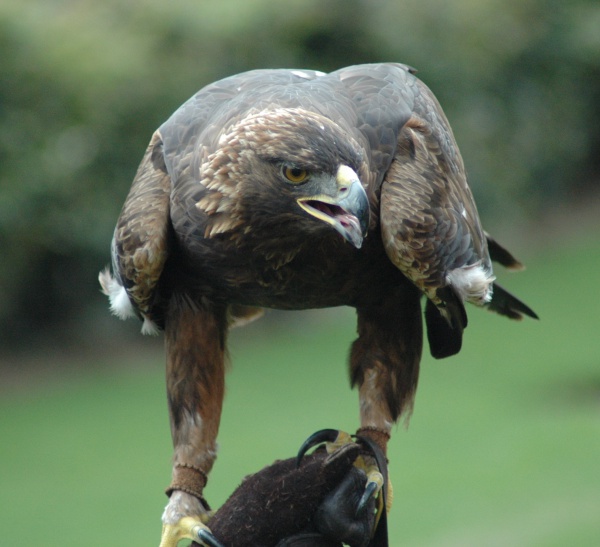Facts About Golden eagle
The golden eagle, a majestic bird of prey revered across the Northern Hemisphere, belongs to the Accipitridae family. These eagles are easily identified by their dark brown feathers accented with striking golden-brown patches on their necks. Renowned for their remarkable agility, speed, and powerful talons, golden eagles hunt a variety of prey, including hares, rabbits, and marmots.
Golden eagles favor building their nests high up on cliffs or other elevated locations. They typically lay up to four eggs, which they incubate for approximately six weeks. Breeding usually occurs in the spring, and these eagles are monogamous, often remaining with the same partner for several years. Young eagles achieve independence within three months and generally establish their own territories within four to five years.
Although once widespread across the Holarctic region, golden eagles have lost ground in many areas due to human activities. Nevertheless, they maintain robust populations in large parts of Eurasia, North America, and North Africa. These birds hold a rich history in falconry and are revered in various ancient tribal cultures. They are also extensively studied, particularly in regions like the Western United States and the Western Palearctic.
Golden eagles rank among the largest raptors, boasting wingspans between 1.8 to 2.34 meters. Their dark brown plumage is adorned with golden highlights on their napes, and juveniles display white patches on their wings and tails that fade as they mature. These eagles are celebrated for their impressive flight skills, soaring at speeds up to 190 km/h and diving at speeds between 240 and 320 km/h. They are highly territorial birds, with home ranges that can extend up to 200 km².
Taxonomically, golden eagles belong to the genus Aquila, which includes a group of booted eagles. There are six subspecies of golden eagles, each exhibiting slight differences in size and plumage. They inhabit a variety of environments across Eurasia and North America, favoring open or semi-open areas for hunting.
Golden eagles are diurnal hunters with a varied diet that includes small mammals and birds. While adaptable, they tend to avoid densely populated or heavily forested areas. These eagles are known to mate for life and engage in elaborate courtship displays. Breeding pairs often build multiple nests, known as eyries, within their territory and raise their young until they are ready to fledge.
Golden eagles can live a long time, with some individuals reaching up to 46 years in captivity. They face natural threats such as predation, disease, and starvation. Conservation efforts are ongoing to protect these eagles, as they face challenges like habitat loss and human interference. While not globally threatened, some local populations are at risk.

 Georgia
Georgia